Palia review — Grinding to greatness

To preface straight from the start, this is going to be a very detailed review to read due to my very mixed relationship with the farming MMO, Palia. A game that launched into Early Access in 2023 and received mixed-bad reviews due to the many problems it had. We are now in 2025 and Palia has had some time to bake, with a plethora of updates and hotfixes, and now a large-scale release of the Elderwood, an expansion to Palia that saw a brand new Adventure Zone. This has been a goal that Singularity Six has set their eyes on for quite a while, and now that it’s been released and players have had time to play around with it, how does Palia stand now it seemingly at its best?
Palia is now available on all consoles, but this review will be focusing on the PC and Xbox version, with input from me (Olivia) and my fellow Editor, Raven. There’ll be sub-headings for each area of Palia, so feel free to scroll through and find out about the aspects that you’re a bit wary of. So buckle up, it’s time to take a trip to Kilima Valley.
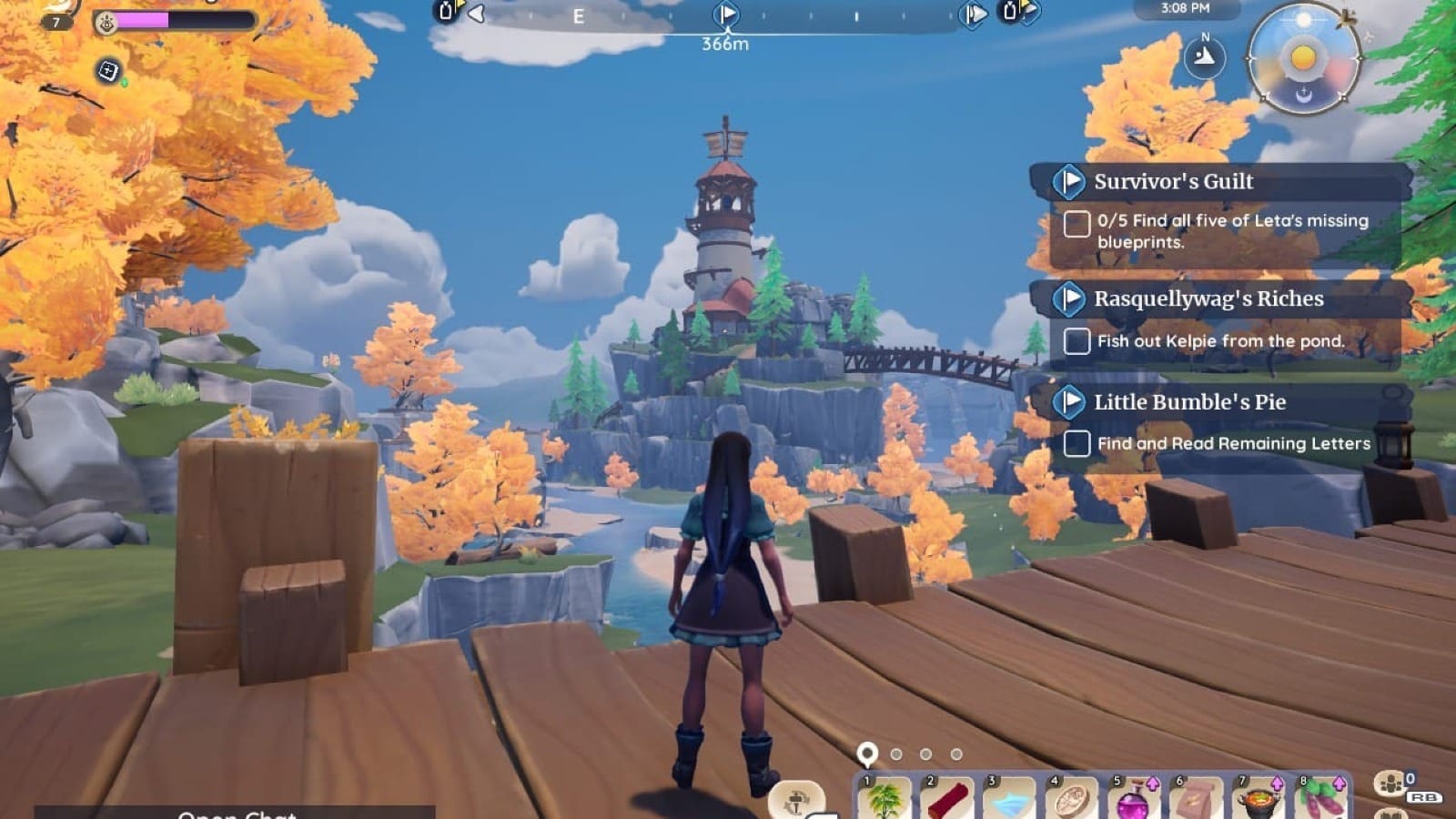
Goals and quests
The main story of Palia is centered on the emergence of Humans in a time centuries after they went extinct due to an unknown catastrophe. You are one of those humans that manifest from nothingness and are guided by the Majiri, a humanoid race characterized by purplish skin and elf-type ears. You are initially greeted by Jina and Hekla, a budding scientist and her companion robot, who are studying this part of history. She directs you to Ashura, a kind-hearted beast of a man who directs you to your own plot of land where you can make a life for yourself. It’s an interesting and different way to start a farming simulator, you still are characterised as the ‘chosen-one’ but it already establishes a rich history to explore and at times, makes for some poignant conversation options as you realize you don’t have any memories of the life you lost. This is, of course, to keep your character as a blank slate, but there’s definitely some roleplay to have fun with here.
The main story has the player and Jina exploring the ancient ruins of your lost civilization. It feels very RPG-esque in how you have to locate and search through 4 different temples that slowly uncover the story. A decision I appreciated was incorporating different characters into each plot line, instead of solely using Jina and Hekla. The Temple of Roots involves Einar as you discover where he and Hekla were made in ancient times, and The Temple of Waves involves a spat between Caleri and Elouisa’s differing research methods. The main story is compelling enough, with plenty of lore to seek out in optional collectables scattered across the world, but due to it not being complete, I didn’t feel rewarded in pursuing all this knowledge. The Elderwood expansion involves new main story quests, but it still ends abruptly, waiting for future content to be added.
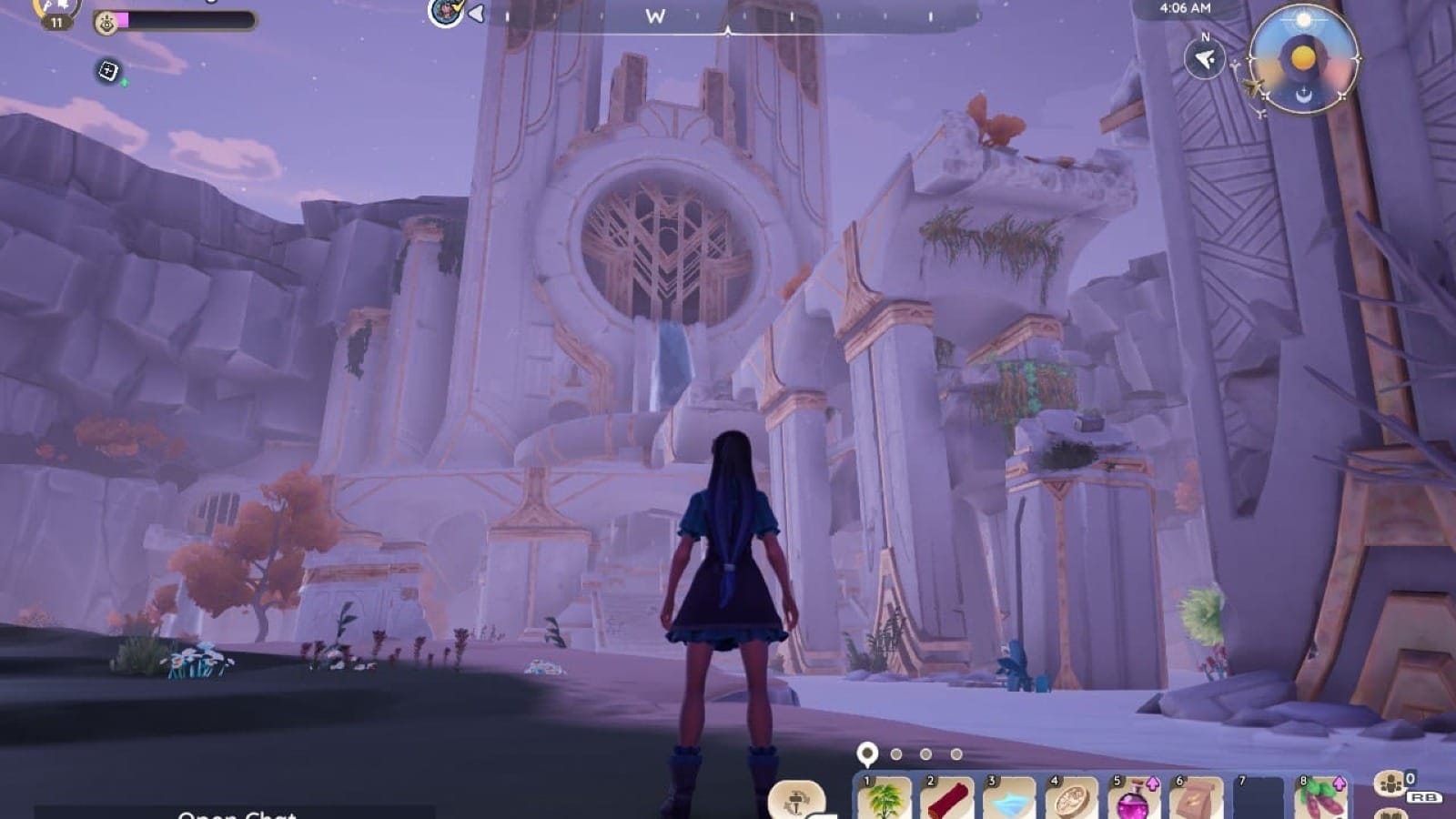
The most glaring issue in the main story is the aforementioned temples you have to explore. They are not fun to explore, at all. They begin quite small and manageable, but everything blows up in your face when you have to take on the dreaded Temple of Waves. The design of the temple is split into three islands, often asking the player to navigate floating pieces of structures to get to each one. On these islands, you are given the task of locating Silverwing eggs, a species native to the human time period. Your map gives you the locations of each egg, but the game makes it a lot more confusing by not implementing a checklist system so you know which ones you have collected. Due to this, you can end up having to revisit islands to find an egg you have left behind, and traversal is by far the worst part of these temples.
Palia is notoriously known for its glitchy jumping and repeatedly chucking you off walls you are supposed to grab onto. Pair this with an airborne temple and you get pure frustration. The quest for this temple is also incredibly vague as you must juggle, finding the eggs, finding tablets of lore to give to Caleri and Elouisa, and finding treasure for Zeki. You are not told which order you can do these, if anything you are probably going to prioritize the Silverwing eggs because it’s the main quest, but after all that hunting, you’ll soon realise you’re going to have to traverse the islands again to look for Elouisa and Caleri’s tiny interactable lore items. Another issue is that the tablets are not noted on your map, so good luck finding them without a guide. To add salt to the wound, it’s only after you complete the twins’ quests that you unlock portals connecting the main island to the sub-islands, which would have been so much more helpful if players weren’t motivated to gather the Silverwings eggs first.
The temple is a complete mess. Time on the Discord looking for help with this temple quickly proved this as everyone commented on how it deterred them from continuing playing Palia at all. The other temples are better, with less emphasis on jumping, parkouring and traversing large spaces, but there are still bits and pieces of each temple that frustrated me in some way. They all desperately need a revamp.
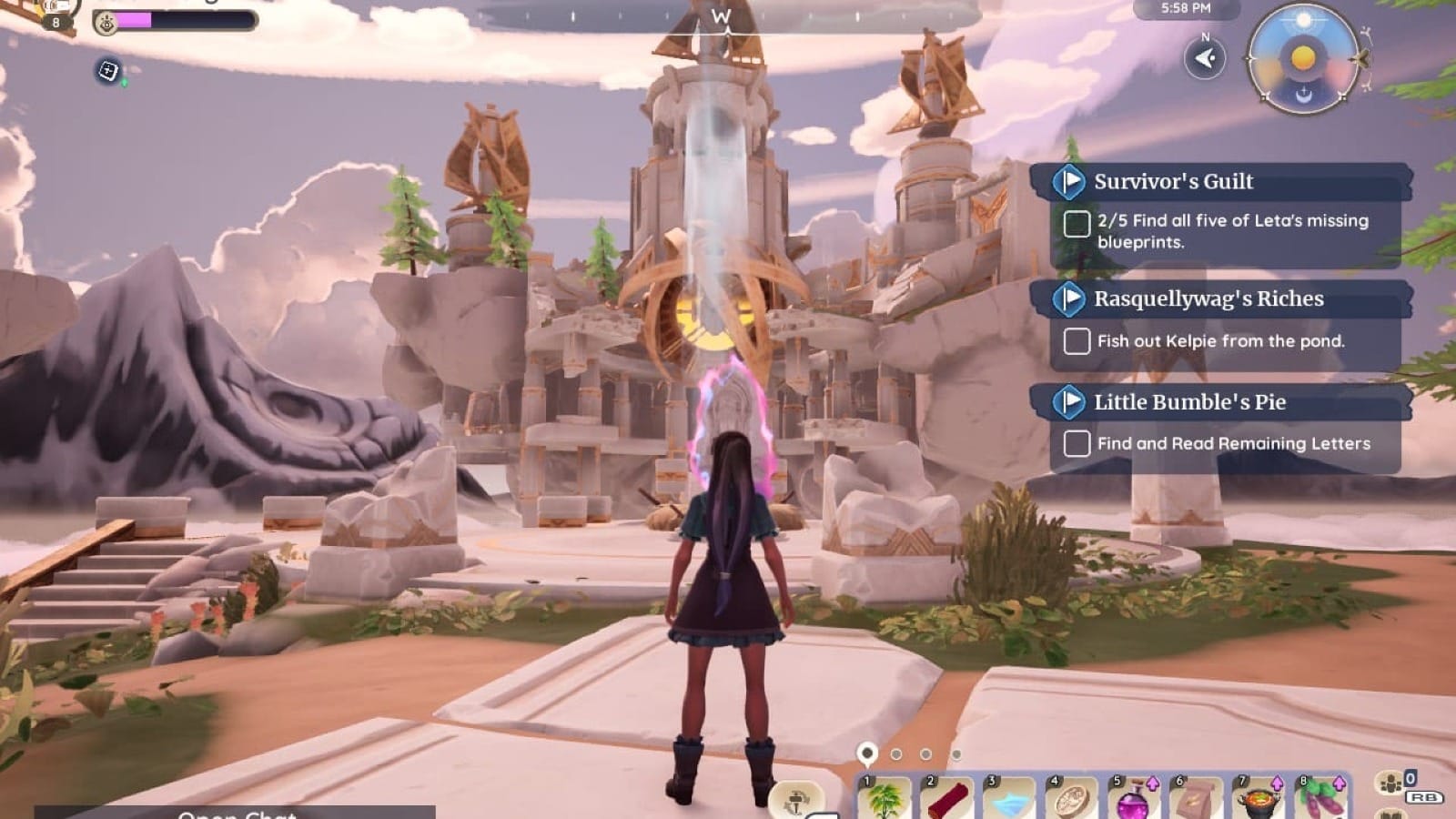
Characters
Despite this review starting off quite negative, it’s time to highlight the best of Palia. The residents of Kilima Valley and Bahari Bay are by far what hooked me and didn’t let go for 70+ hours of playtime. When it comes to choosing your next farming Sim you can end up dedicating your life to the villagers, but what they offer doesn’t have to be integral to many players’ enjoyment. For some, it can just be icing on top of the cake, and that’s a completely valid take to have. What you want from this experience is up to you, which is what makes this genre so versatile. But for me personally, who I share the world with is a key part in making any game world feel alive. Moving to a village in the countryside means living off the land and building your life from scratch, but also means becoming part of a community. That’s why I find myself skipping out on so many modern farming sims and to be fair, it is a really hard aspect to master. Games like FaeFarm suffer in the character interaction department, and even titans of the industry like Animal Crossing: New Horizons, whose villagers are incredibly robotic and don’t offer any interesting points of conversation. You also want your characters to be responding to the world around you and the actions you take, and thankfully Palia has this in spades and, dare I say, has one of the strongest communities I have ever had the pleasure of being in.
Palia has 26 residents, all with 4-5 levels of friendship you can unlock to get to know them better. Each level of friendship has their own quest that does a great job of enriching character development. You get an immediate sense of which archetype or trope each character falls under – Caleri is a grumpy librarian, Reth is a flirty chef – which can seem plain at first. But as you get to know these characteristics, you realise their depth in the troubles they have and the baggage they carry around. A lot of the storylines are surprisingly deep and quite heartbreaking when you put the time in to unravel them, which is incredibly rewarding.
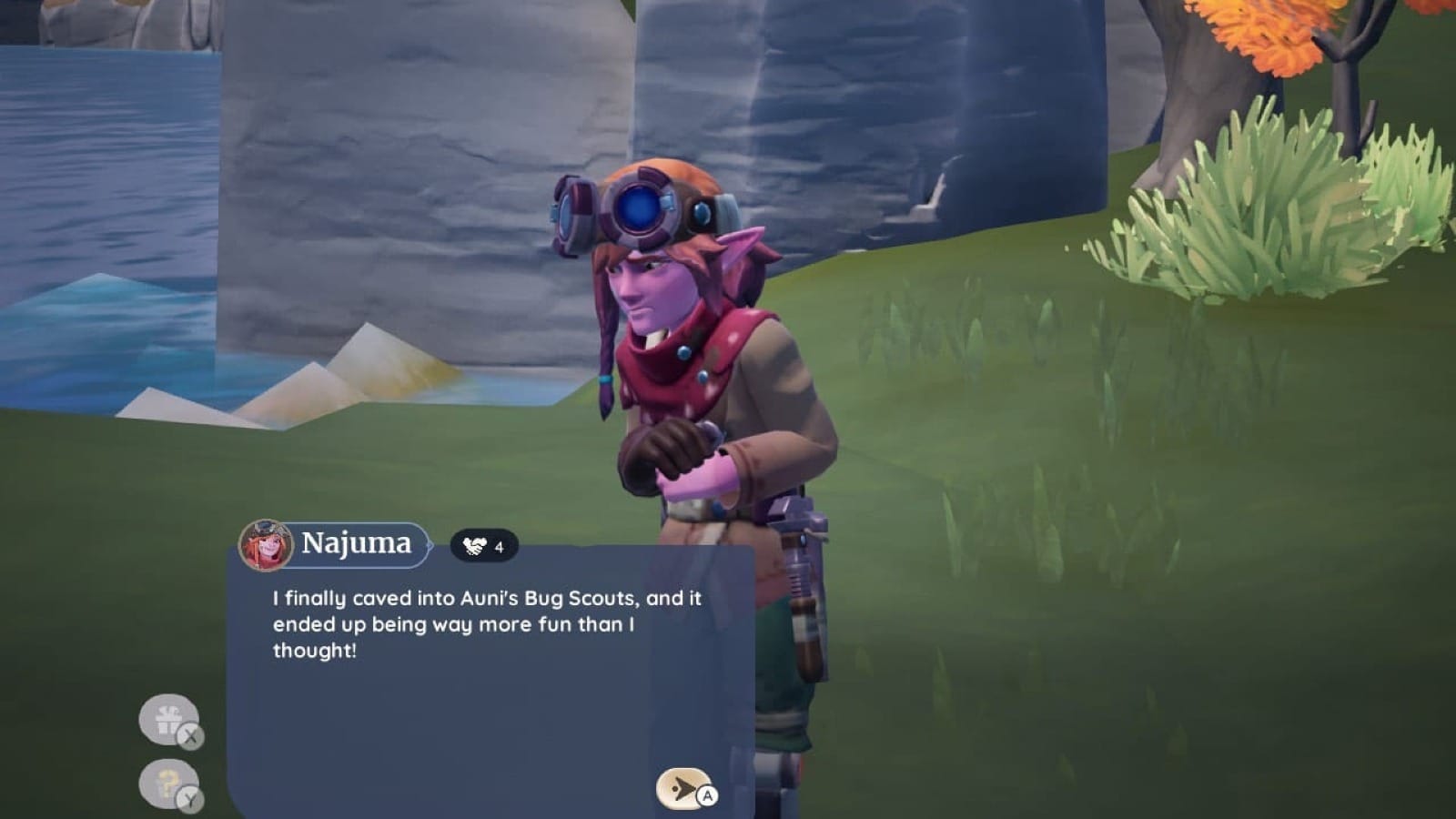
Progressing storylines often gives you rewards that are seen in many games in this genre, from their favourite recipes, a piece of furniture, to their bedroom key – saucy. A cute note that I appreciated was the justification of why you can now enter people’s rooms, instead of just deciding to barge in one day. For example, Auni’s level 3 quest is that he wants to run away, so he asks you to grab his camping gear whilst he goes to the rendezvous point. Sometimes it can still be a bit silly, and some characters’ level 3 quests are not directly tied to entering their room, but it was a fun inclusion to make the scenario more believable.
To progress character friendships you do the run of the mill gift-giving, so get them guides up girl. What broke up the monotony of gift-giving – so you don’t have to stockpile 50 starstones – were the ‘Weekly Wants’. You can ask residents what kind of things they want and they give you a short dialogue about how Einar wants a particular fish as a pet, or Jel is running out of silk so he’d like some more. These ‘Wants’ reset every week and for each level of friendship you obtain, you can give them an extra weekly want. You can still only give one gift a day, but the game helps you constantly build up friendship by making talking to residents a boost to the gauge. After playing Palia for around three weeks the system doesn’t feel very repetitive, they ask for a range of things and give a short justification which makes Palia feel so lived in.
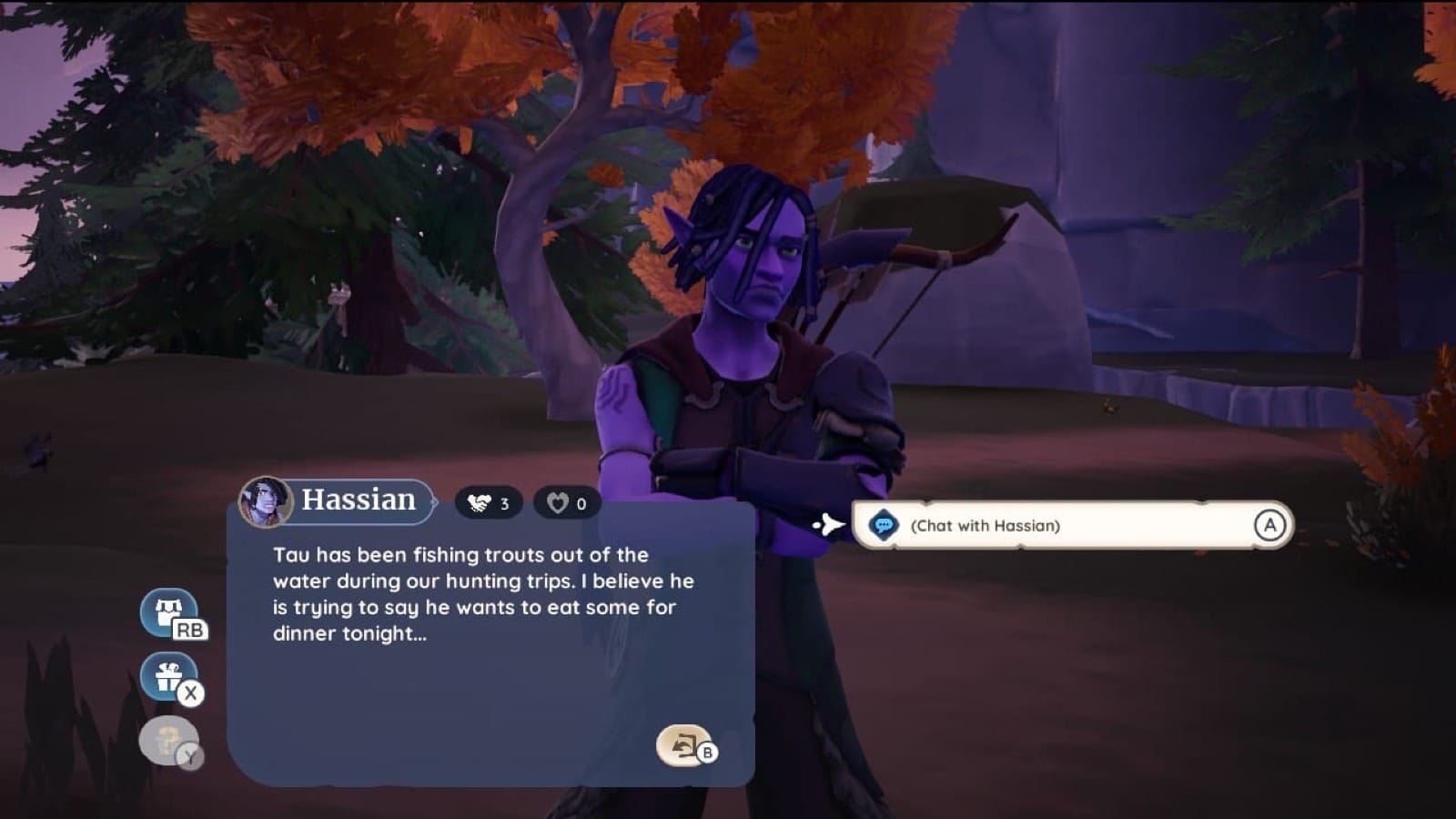
Out of the 26 residents, you can romance 10 of them with no restriction on who you can date. You can even date the local fisherman robot, who is unironically the option that most players are drawn to, don’t worry, I have the statistics. Romance unlocks 3 extra levels to progress your relationship with a character, and this can be done by giving them a box of chocolates or a Heartdrop Lily, pretty standard. This unlocks dialogue that aligns more with flirting, the player being able to choose between ‘chat with ‘ or ‘flirt with’ when you engage with them. And if you’re struggling to choose a partner? Palia has no repercussions in sharing. You can end up dating the whole valley with no consequence, the only “downside” being that you can only equip two pins to show who you’re romantically involved with – this is the only way other residents can comment on your relationship, so if you don’t equip Hassian’s pin then it ends up being your little secret. I wonder if this feature will be altered in the future, as games like Stardew Valley and Persona games are notorious for tripping you up for your infidelity.
My only gripe with romance is a lack of dating or presence in your playthrough. Romanced NPCs will continue their normal day and night pattern, no visiting you on your plot or asking you out on dates. I can see why the former isn’t a feature as Palia is an MMO, the patterns must be rigid so players can always access the character. But asking a player on a date in a closed off space to the main game or visiting you on your plot (which is isolated to their working model in the main game) doesn’t seem like a far-fetched request. However, overall I can’t complain too much as romancing Hodari had me giggling like a schoolgirl 99% of the time.
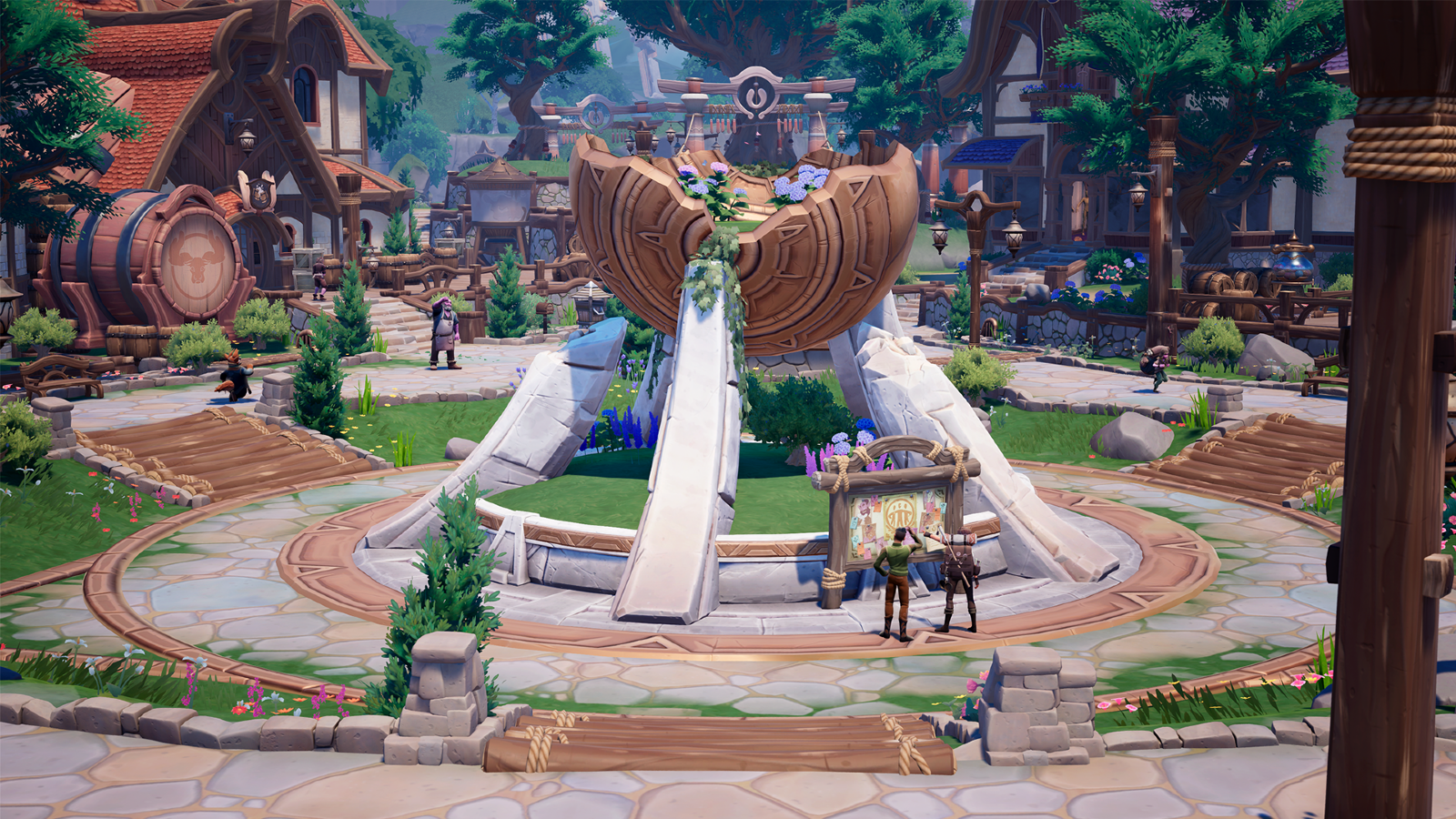
Gameplay
Palia’s gameplay is also one of its strongest points, with so so much to engage with. You have your standard skills that you level up as you do more of them, including fishing, mining, foraging, bug catching, furniture making, hunting, cooking, and farming. You can see the progress of each skill in your inventory screen, and you gain more experience for doing harder tasks, but make sure to keep an eye on your focus bar. The focus bar is basically your energy gauge in Palia, but if you run out you can replenish it by consuming food, you don’t have to sleep once it’s run out. Activities such as mining a node or catching a fish will use focus and if you run out and do an activity, you won’t put that experience into the respective skill. Palia gives you ample opportunity to maintain your focus though, as you can go to shrines to increase your maximum focus or increase the experience you get from doing your skills.
Each skill is tied to its respective guild, and when you gain levels you get rewarded by that leader. For example, Badruu is the guild leader for farming, so he’ll provide you with recipes for your iron watering can and copper hoe. Again, this shows how committed Palia is to incorporating its characters into your life. You end up feeling like an apprentice who’s finding their feet in this new world and it feels incredibly rewarding when you talk to the guild leaders after leveling up. This happens for the first 10 levels of each skill and after this you gain a new currency in the form of medals. These can be earned from doing weekly tasks for each activity, including harvesting five star quality crops, you can then spend them on unique furniture items and what-not in each guild’s shop.
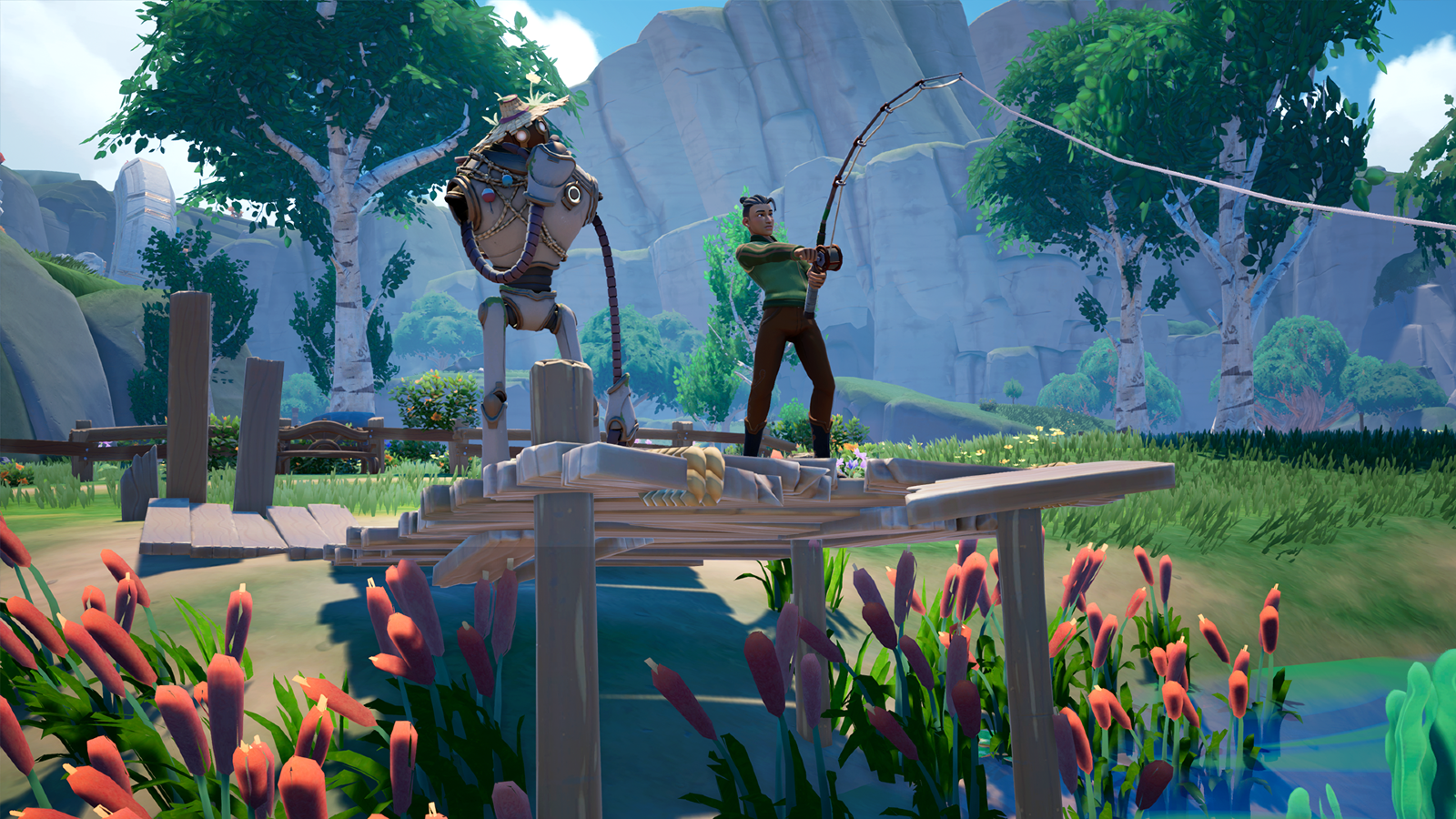
I won’t go through every skill as if you have played one or two farming sims, you know what to expect. However, a worthy mention is Palia’s house customization as it may be the best I’ve ever seen. The possibilities of what furniture you can make or buy is practically endless, fitting so many different aesthetics, from cottage-core to dark academia. You can buy them from Tish’s shop, but they’re often really expensive and eventually you’ll end up having the recipe for it. You can place your items on Palia’s grid-based plot and even turn on an option to freely move an object, just like The Sims 4 cheat, bb.moveobjects. That means the potential of stacking items and bunching them together allows for some real creativity.
The house itself can also be expanded on with your ability to purchase a range of structures, like your standard medium and small rooms, but also hallways, porches and fireplaces. You can even add second stories! The plot you’re given starts off really small, but you can purchase Writs to expand where you can place buildings and objects. It’s honestly a treat to decorate in Palia and being able to view other players’ houses in the House Tour makes you realise how much potential there is. The only problem – that I haven’t experienced yet, but have seen others complain – is that there is an item limit, so maybe be careful with placing all of those Potato Pods into your bedroom.
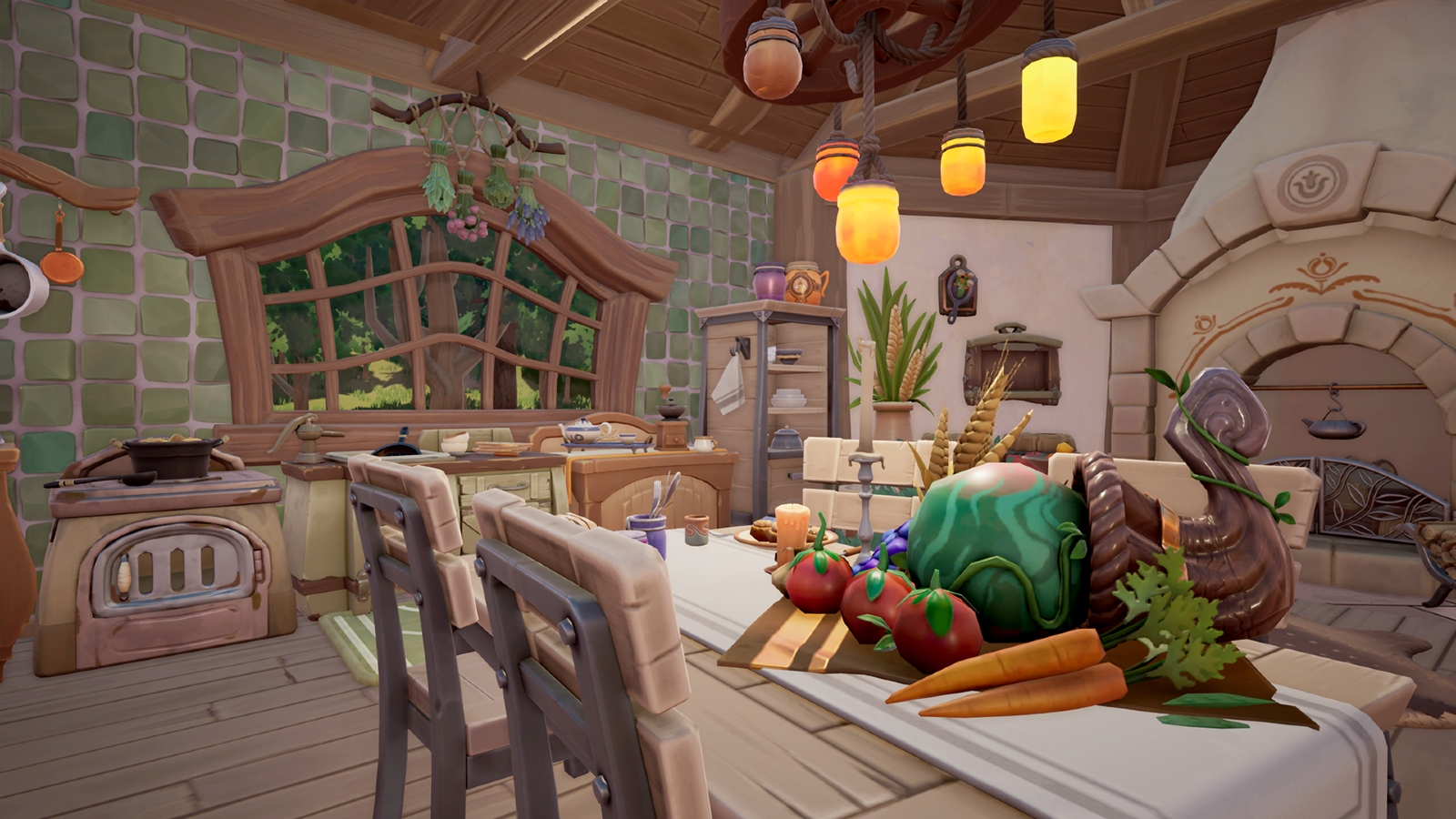
Finally, a few quick mentions of where the gameplay falls a bit flat, mainly in cooking. In many other farming sims, I have never really been drawn to the cooking mechanic. In Stardew Valley I only cooked 70% of the recipes because I was trying to achieve perfection. However, in Palia it’s essential. You can buy meals from Reth’s Inn, but cooking meals boosts your cooking skill, unlocking more recipes that will give you more focus points. I found constantly managing my hunger to be a bit annoying at times due to how constantly you need to do it in late-game, as you end up doing a lot more focus consuming tasks.
But My biggest complaint is that cooking can often cause a lot of bugs and glitches. When you pick a recipe, you are given a time limit to complete it. This in itself isn’t really a problem and it’s ample time, but what throws you off is that the cutting minigame can sometimes glitch and simply not work. This means you’ll have to navigate the menu and hit the unstuck option so you can reset your character’s position. This in turn wastes time and in more complicated recipes, can mean failing it. This happened to me quite a lot and often two or three times in one session! It’s sadly yet to be fixed and makes cooking more of a hindrance than a joy.
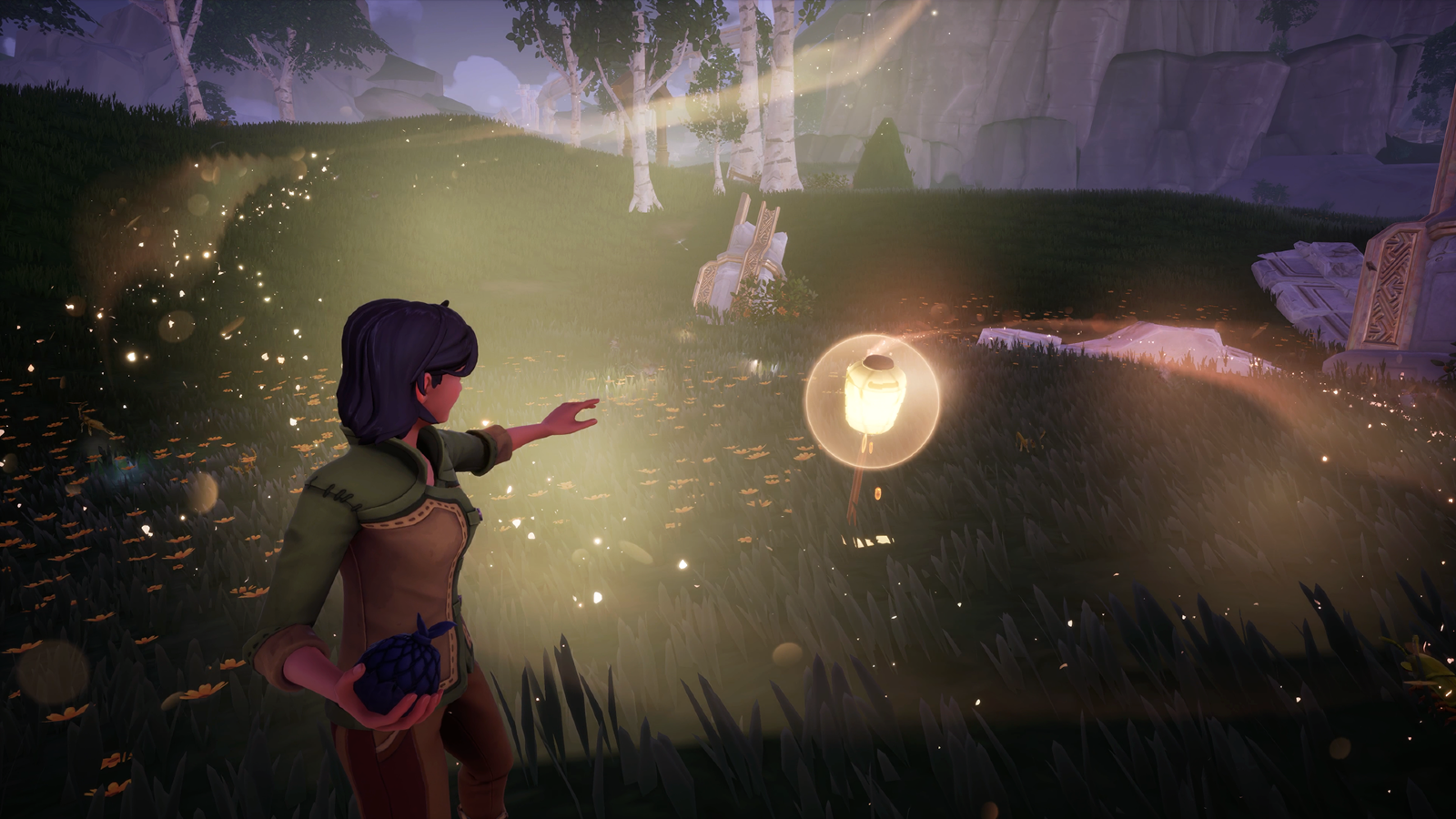
Bugs and gameplay issues
Sadly, sticking to the negatives of Palia are the other bugs and gameplay issues I regularly encountered whilst playing on PC/Steam Deck – we will have a section for PS5 performance below.
In Palia, you can discover optional tasks that are marked as ‘Discovery’ quests. They can include fishing up lost letters in a bottle, or finding Hodari’s spice collection – which has miraculously scattered itself across Bahari Bay. These quests are a fun addition that always keeps exploring these vast landscapes fun and refreshing, but I very quickly noticed that once I had completed these quests, the interactive items that trigger them don’t actually leave the map. For example, I dug up a weird artefact that I could show to Jina, after the quest was done, I was confused to find the same dig spot. But when I interacted with it, it displayed a pop up ‘error’ message. This happens frequently with these quests and therefore ruins a fun mechanic, cracking immersion.
This also sadly happened with multiple villager quests, highlighting a bigger problem found in how Palia’s team responds to issues in their game. The NPC would keep mentioning a quest that I had already completed, and a quest marker would show up in my quest log saying I hadn’t done it. After 20 hours of progressing the game, it’s still there which is a bit of a slap in the face. This was a massive issue in my playthrough and desperately needs an overhaul.
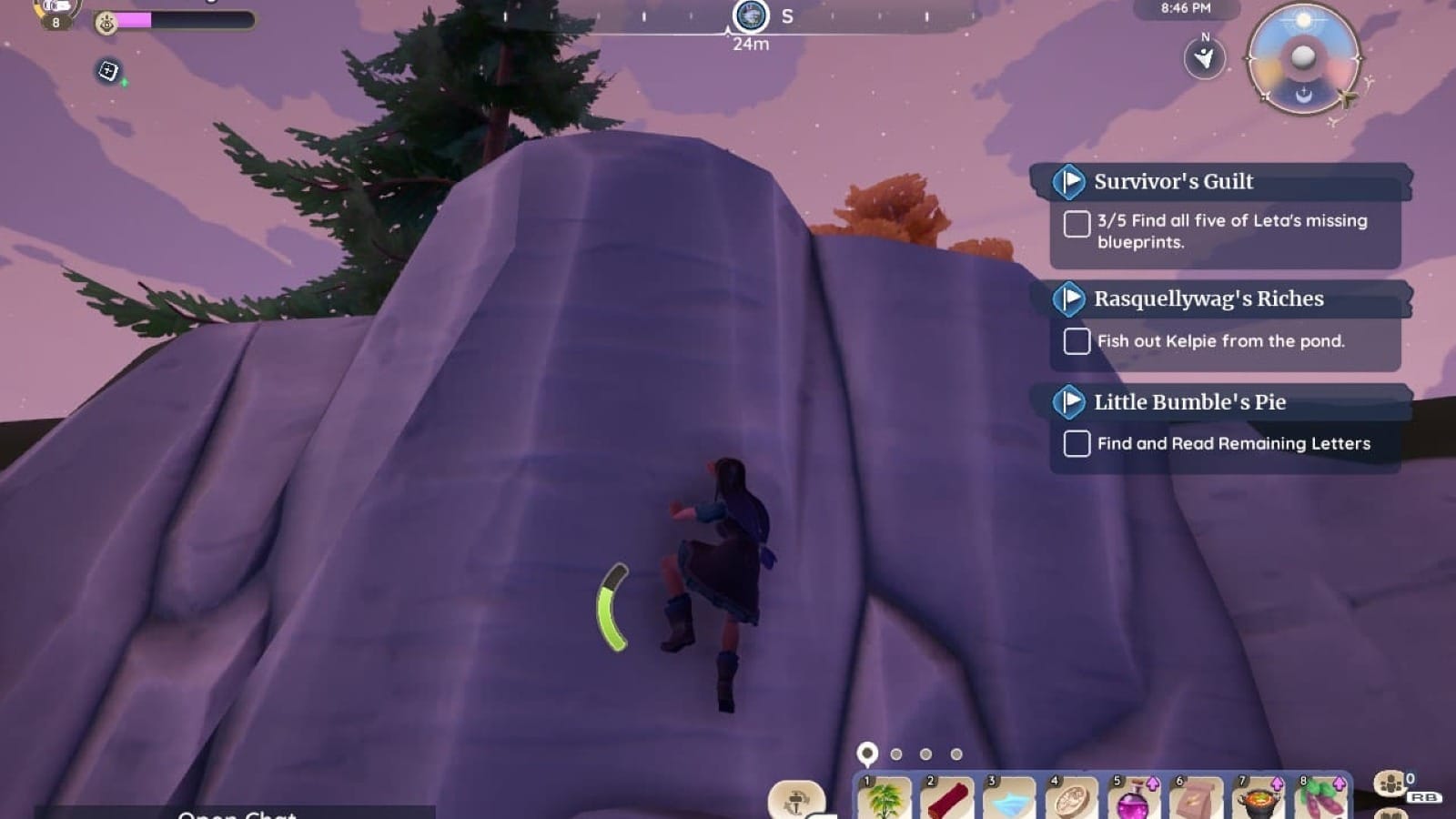
The other major downfall of Palia is its climbing and jumping mechanic. Holy hell is it buggy and sometimes downright unusable. The game has a similar energy gauge that games like BOTW popularized, so you can scale cliffs. However, sometimes the game just does not register the fact you have tried to cling to a climbable surface, it will just drop you down. You can also quickly jump up a cliff face, taking up more of your energy, but I ended up never using it because it often propelled me off the cliff when I got to the top ledge. This is a major issue that can’t be ignored when playing Palia. As mentioned before, climbing is a big part of the main story temples, rendering them very frustrating to navigate when you do them.
Other minor bugs that I tended to overlook were villager models being buggy – villagers would be half sunken into the floor when walking and being randomly kicked from servers.
PS5 Performance – During my time with Palia, I ran into a few annoying bugs. One of the worst and most intrusive is being kicked from a server after requesting items to trade. To go along with this, I had multiple quest items seemingly vanish after each time I was kicked from the server, only to return after resetting the game. There are also noticeable performance dips on the Xbox Series S when trying to hunt or fight in the new expansion.
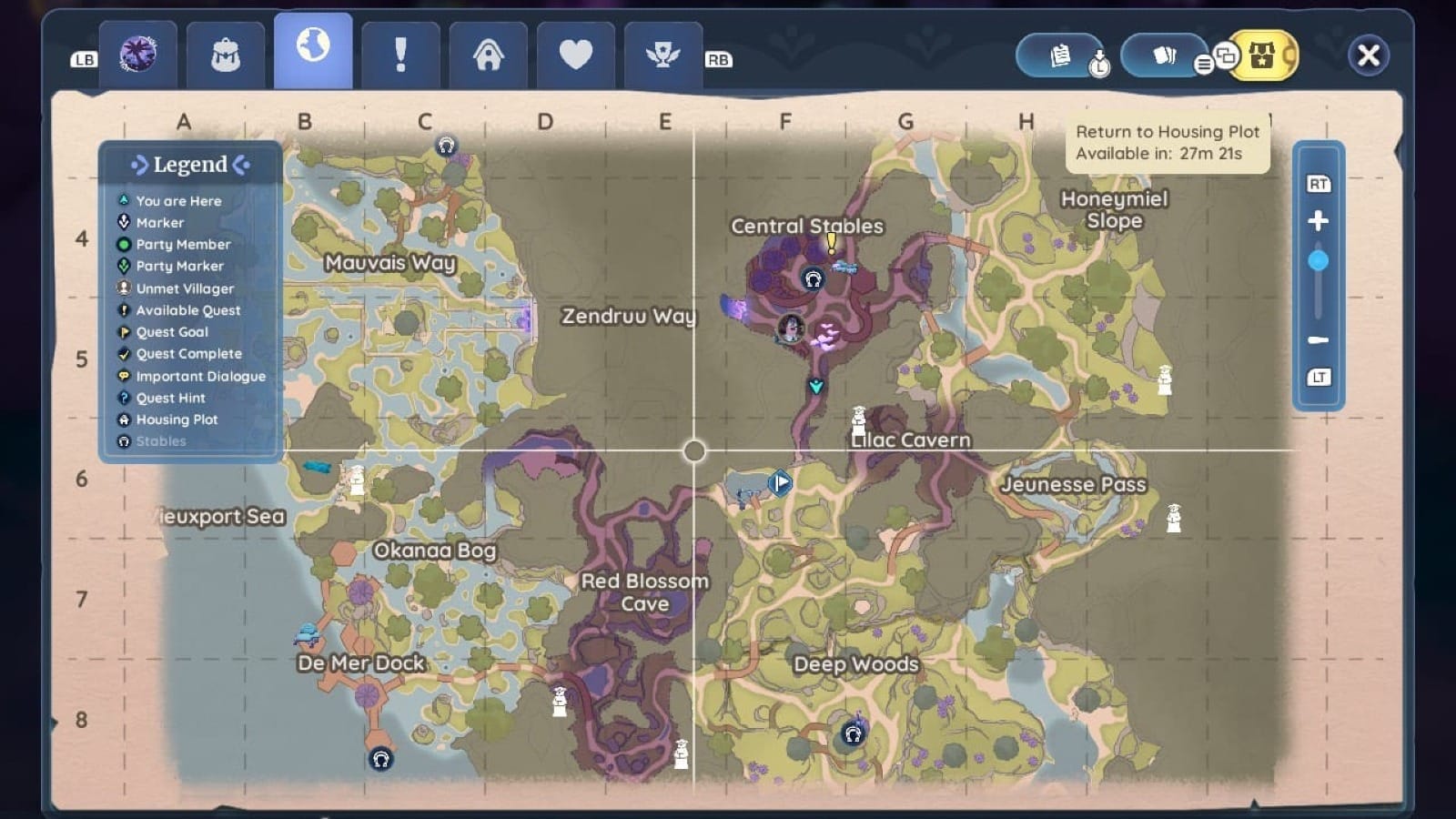
Multiplayer
Palia blends the genres of MMO and farming/life sim and despite my apprehension about this at the beginning – I have personally never been interested in the online worlds of MMOs, I’m antisocial… – Palia doesn’t really need to be an MMO if you don’t want it to be. I’m not actually sure if this is a positive feature of Palia as advertising your MMO should probably mean it should act as an MMO, but you can comfortably go through 99% of Palia without ever interacting with another player.
So what do I mean by MMO for those who haven’t engaged with the genre? An MMO is mainly characterised by how you share a vast open world with thousands to millions of other players, all going about their business and doing all the things you’ve done or yet to do. What makes an MMO should be collaboration, and Palia does have this if you want it. As mentioned above, the gameplay is separated into 8 different branches, your typical fishing and so on. Ones like hunting, fishing, chopping wood, mining, and bug catching can be done alongside other players, the reward being that you get buffs to those skills. You can even collaboratively take down animals whilst hunting, each player getting drops from the kill, this can be said the same for mining too so don’t be stingy, chuck those gold node coordinates in the chat. This is a good motivator to stick around a group of people when doing your resource gathering, but personally I only took advantage of this in passing. It also definitely helps in harder aspects of the game, like finding gold and silver and hunting down those rare Chaapas and Sernuks.
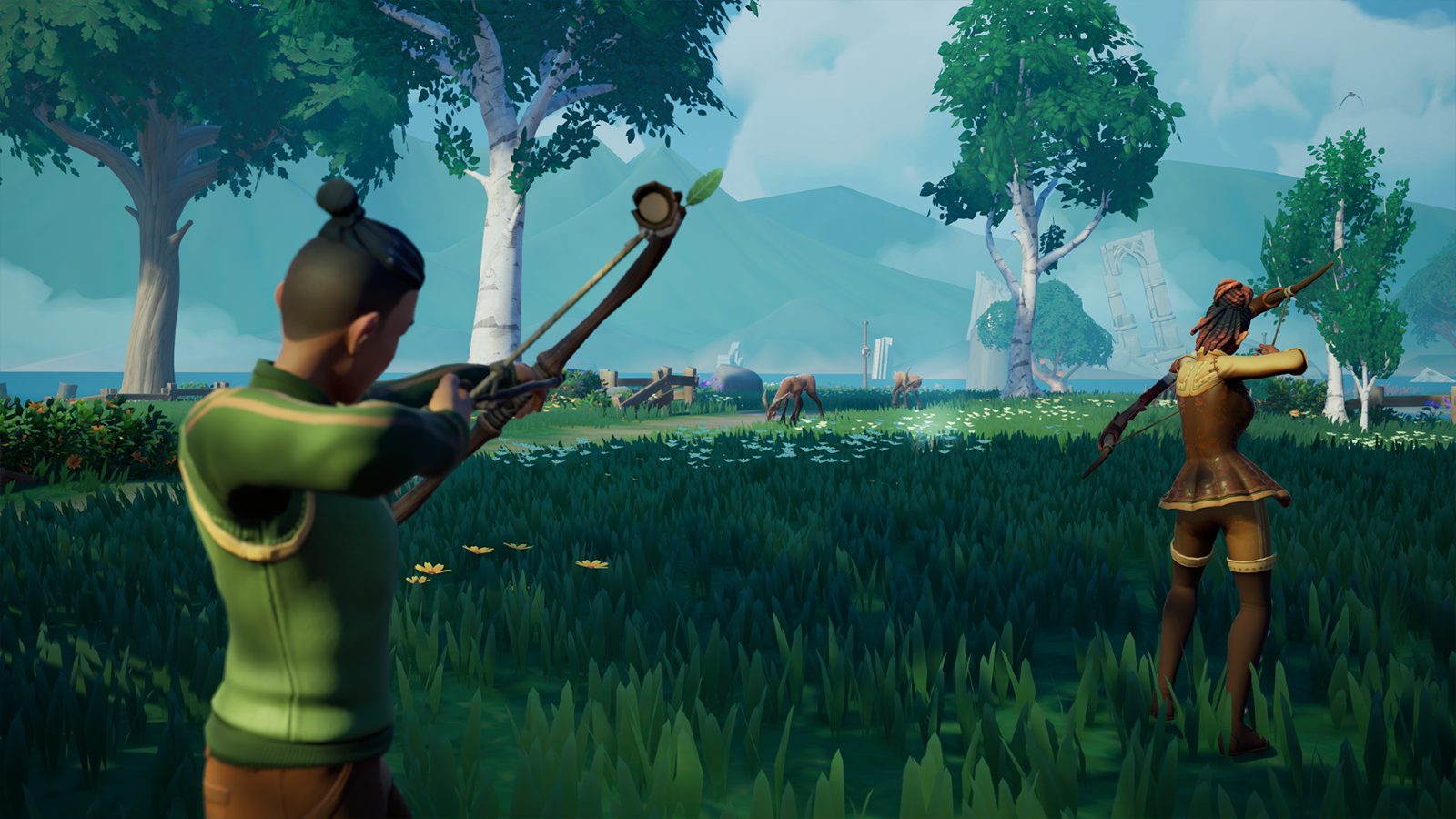
There are elements of Palia that force the player to engage with the community – I make it sound so awful – like the unique flow trees. These are purple glowing trees that periodically and randomly show up around Bahari Bay and cannot be chopped down normally. The gauge that pops up to signal how long you have left until it has been chopped down rapidly restores itself when you try to hack it down by yourself, therefore you need two or three more people to help keep that bar down. Flow trees give the player flow wood, which is an item that appears in a bunch of optional quests and villager friendship quests, so they are quite hard to avoid. They are also used to craft certain items like the glow worm farm and whole sets of furniture. Luckily, this is an activity that can be done whenever you’re in the area as other players normally alert the chat with coordinates and they respawn in groves at midnight.
I’ll also give a brief mention to the main story request that requires you to use multiplayer as the game has a function that allows you to put up request posts for items you need, they can be more or basically anything collectable you have picked up. However, you can’t exploit this feature as you can only request objects you have picked up before. The main story asks you to request an item and have it fulfilled, but Palia’s community is chill and helpful enough that if you put a simple request up, it’ll be completed in no time. But that’s about as far as the MMO/multiplayer aspect stretches.
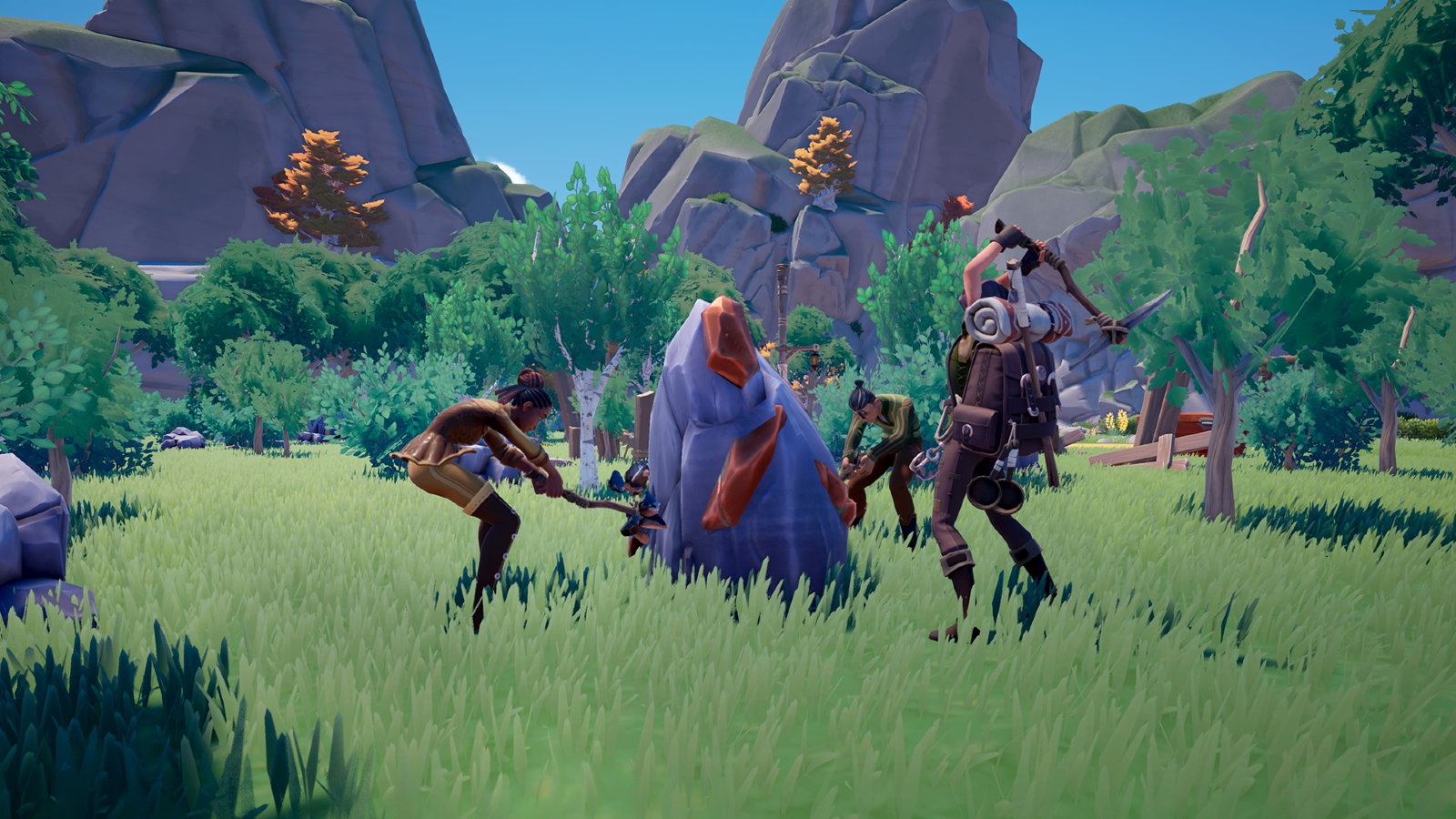
Other fun aspects of multiplayer include the player made cooking parties, where groups of players will collaboratively cook a recipe. You’ll be told what ingredients to bring, and then you all stick to your own stations, so no running around mixing and baking. This shows off Palia’s welcoming community and how it can work well as an MMO.
You also have the Maji Market, which runs for one week each real-time month. This mini event will include multiplayer games like hunting down chaapas and shooting balloons. A bit of fun for everyone.
Like I said before, Palia can be comfortably played as your typical solo farming sim, but I can see why this would be a negative for those looking for an MMO experience. Hopefully, they’ll add more multiplayer features in the future.
Microtransactions
As is the nature of MMOs where the base game is available for free, Palia has a few microtransactions. However, I’m very happy to say that you can substantially play Palia without the need for spending your money, unless you play farming sims for the fashion and customization.
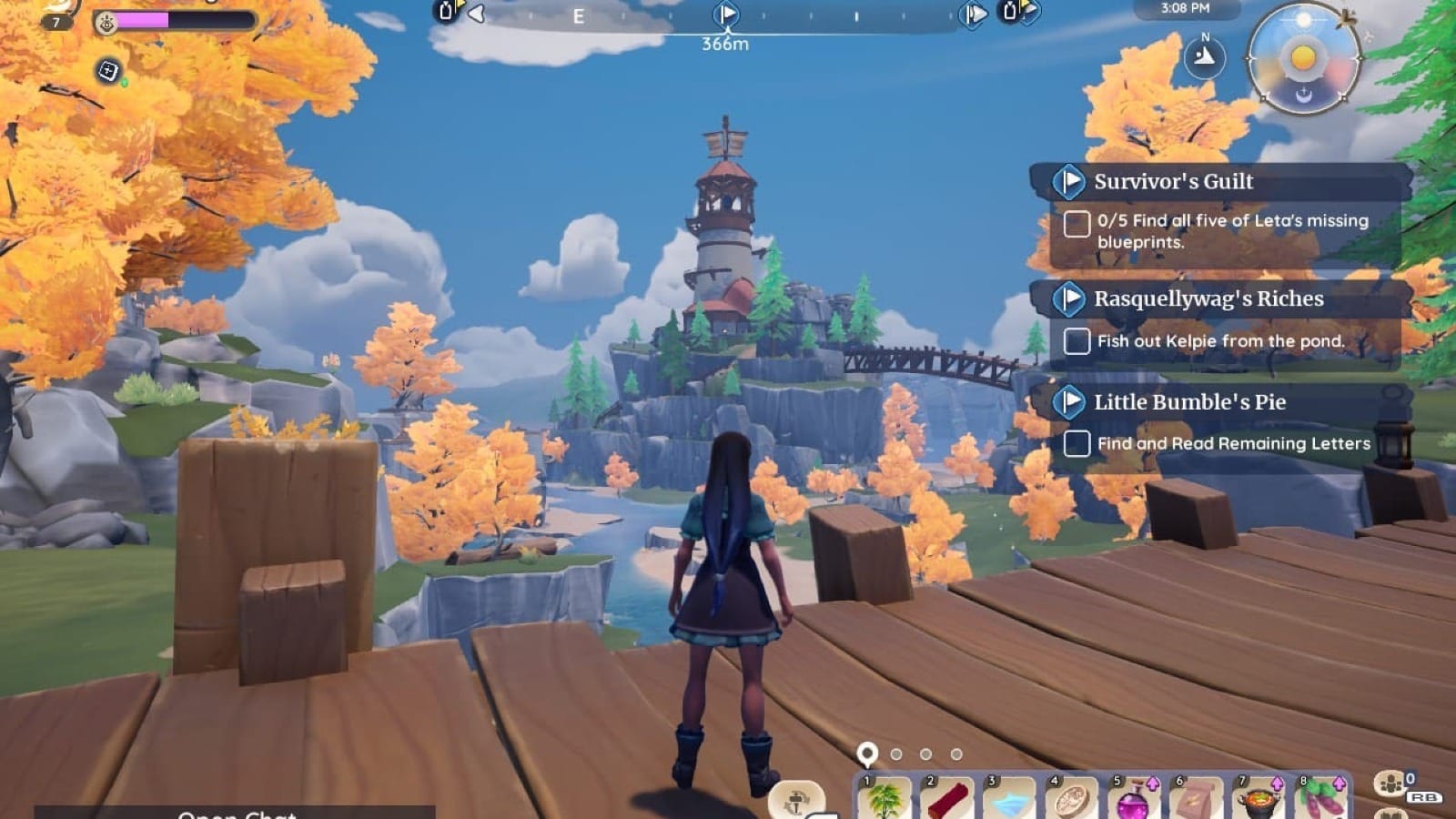
Palia’s store has a few categories you can splash the cash on, primarily their clothing. At the beginning of the game when you customize your character, you’ll get plenty of options to dress up, including hair and clothes, but just know that’ll be all you’ll have access to for the rest of your playtime. The purchasable clothes are cute and varied with the devs releasing them regularly, and I was sad I don’t get to dress up my character, but it could have been much worse. Other purchasable options include tool skins and companions. These are little pets that follow you around the map and can carry items back to the house for you. This was a disappointment for me when I first booted up Palia, but now in the recent update players have been given access to a free robotic companion.
Overall, the micro-transcations in this game isn’t the be all or end all, I just find it funny that Jel’s shop is completely useless if you’re not giving him your bank details.
Elderwood expansion
After 60 plus hours into Palia, I managed to get myself to the Elderwood and tucked into the content that was provided in its release update and – thankfully – the content of the recent Radiance Rising patch. The Elderwood can be found in the top left corner of Bahari Bay, which can be conveniently accessed through the back entrance of your farm. In the latest update, you can even build your own Stable board, so you can zip straight to each zone.
When you enter the new adventure zone, you’ll notice that its layout is quite different from its companions, and after a few hours I realised that traversal was very different too. The landscape is full of large twisting trees, dark descending caverns and large bogs making the terrain difficult to clamber across. I and a few other players agree that the Elderwood is much more difficult and sometimes annoying to navigate due to being more enclosed and with singular paths – in contrast to the vast openness of Bahari and Kilima. I found this to be a nice change as I felt like I was actually traversing an ancient forest. Fast travel points negate traversal becoming too much of an ache and the recent inclusion of the bouncy purple flowers makes scaling cliffs easier, but I may be singing a different tune after 10+ hours.
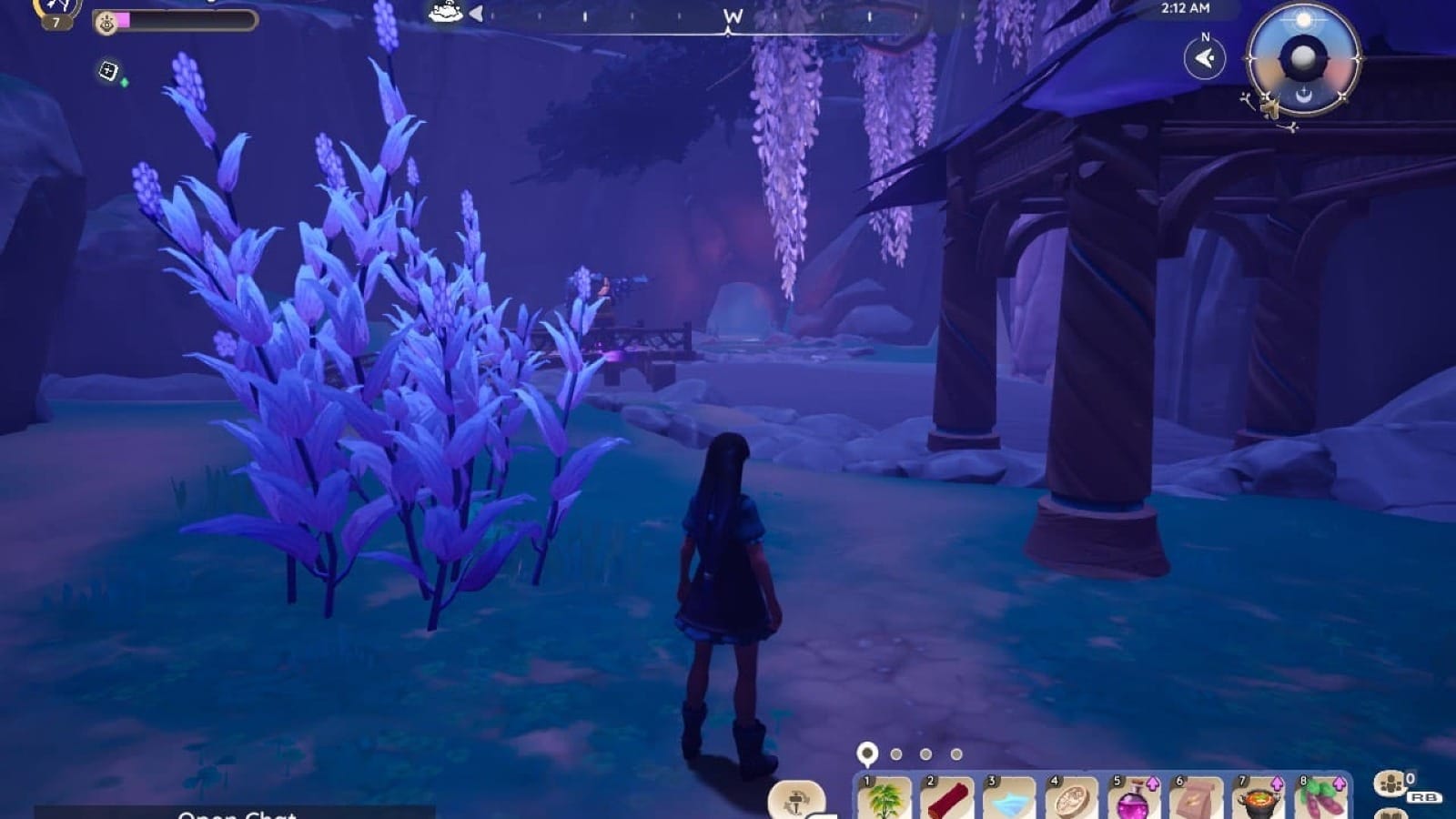
I also found the Elderwood main story Quest to be more riveting and different to the first stretch of Subira’s research into Flow – I found revisiting the temples to be incredibly reductive. This time you’ll be teaming up with Subira and Tamala to find out what has infected the Elderwood with this dark miasma. You’ll also meet a resident wild Umbran child called Ulfe – a friendship system to be added later on – and discover the identity of the Beast that lurks in the woods. I haven’t completed the Elderwood content yet, but everything I’ve seen so far has been intriguing enough. There’s also a load of side content that keeps you exploring the area, from new Discovery quests, bundles of artefacts to find and furniture recipes to unlock. The latest update also includes the Prismbeard quest, which has you and the Daaiya brothers looking for buried treasure. Palia is always an expert in filling up that collectathon monster inside me that just wants to consume.
Overall, the Elderwood is a welcome addition that beefs up Palia’s main game and long, long list of things to do. It runs well enough for me on Steam deck and has the same hiccups the game has always had. I’ll look forward to more quests to give more purpose to the area, especially the promise of a friendship system for Ulfe, but for now it’s substantial.
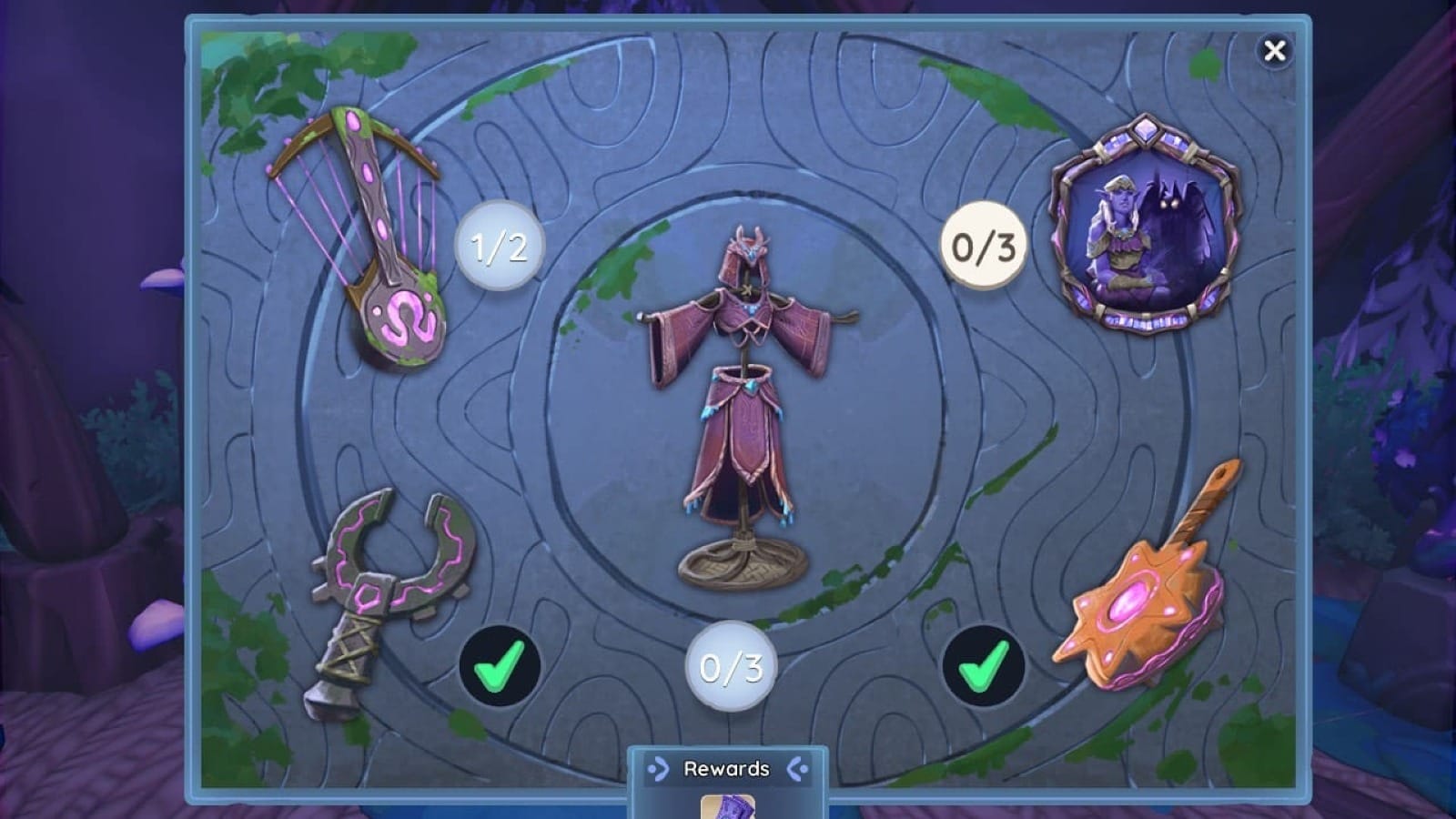
Raven – The new expansion is gorgeous, but a little too big. I found the map to be large and full of foliage and creatures, but not much else. If anything, it could’ve been condensed a little to have more life throughout the area. The quests are fine, but I kept running into issues where locations wouldn’t appear on my map even with the quest selected.
Review Guidelines
Alright
It’s so hard to score Palia when I look at my playtime of 75 hours and think of all the amazing things this game has to offer, from its in-depth characters, activities to indulge in, and endless possibilities in decoration. However, all of this is sprinkled with bugs, a ridiculously broken climbing mechanic and the fact that it seems far from being finished. It’s definitely come a long way since its launch in 2023, but we still seem to be so far away from its full potential.
Pros
- Some of the best written characters in the farming sim genre
- A lot of content to get stuck into
- Compelling game systems
- Fun multiplayer aspects
Cons
- Bugs and glitches that are unavoidable
- Broken climbing mechanic
- Main temple designs are poor
- Unfinished
This review is based on a PC copy provided by the reviewer.
Share this article
Affiliate Links












